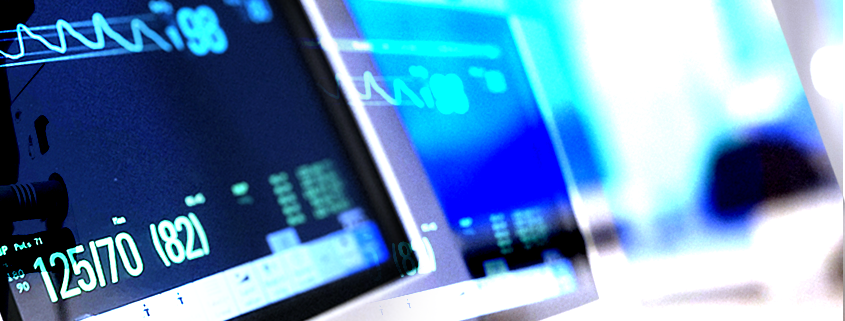Do you as a medical device manufacturer consider the intended environment of use when you design alarm sounds?
Based on experience in emergency/intensive care and equally within the medical device industry, we have learned that some companies have difficulties to clearly define the circumstances where the devices are intended to be used. It is common that same type of device can be used in a multitude of different environments.
So why does this matter? And how can you design the sound level in a device that is used in an X-ray lab, ambulance or in a helicopter? Well, two very simple examples are the type and level of the alarm sound.
The standard IEC 60601-1-8:2006 specifies basic safety and essential performance requirements for alarm systems in medical devices. However, the level of the sound is not defined except for that the high priority alarms shall be louder than the medium priority alarms which shall be louder than the low priority alarms. Interestingly there is no requirement that the sound must be at the same frequency note beeping repeatedly. Yet, that is how most of the medical devices alarm sounds.
We have had requirements for usability testing since 2007 when the first IEC 62366 was released. In February 2016, the FDA also released the guidance, Applying Human Factors and Usability Engineering to Medical Devices. Together with ISO 14971 on risk this has meant a great step forward to avoid use errors.
But still, manufacturers have difficulties taking into consideration the ecosystem of the environment of use.
Here is an example of the sound chaos a regular day at ICU.
Firstly, you have patient monitors where around six different parameters with alarms can be monitored. A patient that are ventilated through a respirator generate further 3-5 different alarm issues. Added to this, it can be around eight to ten active infusion pumps in the room. All the devices have at least low and high priority alarms. That means that at any given time you can have up to 1-20 alarm sounds to react to, and all the alarms go beep beep beep. This may actually lead to alarm fatigue for health staff and induces unnecessary stress for both the patient and the staff. What may happen is that some of the alarms are just silenced repeatedly because the staff has other priority tasks to perform. The alarm may therefore not mitigate risks as it was intended by the manufacturer from the beginning.
A study conducted in Hamilton, Ontario Canada, published in the British Journal of Anesthesia, has showed that musical notes are less stressful than standard flat notes but equally informative. One could even imagine that each type of medical device has its own melody thereby allowing the staff to immediately hear and identify which device needs immediate attention, or not. But also, to better adapt the sufficient sound level, depending on the environment where the device is used. Despite this, manufacturers continue to use flat tone beeps. The reason for this is probably economics. The time and cost to design a system that could produce melodies would probably be higher. But maybe it is time for manufacturers and regulators alike to take the next step in alarm sound design and use sound researcher expertise to find the BEST sounds, not just the most common ones, and sometimes also the most annoying ones.
Want to come in contact with us at QAdvis, just send an email to info@qadvis.com


